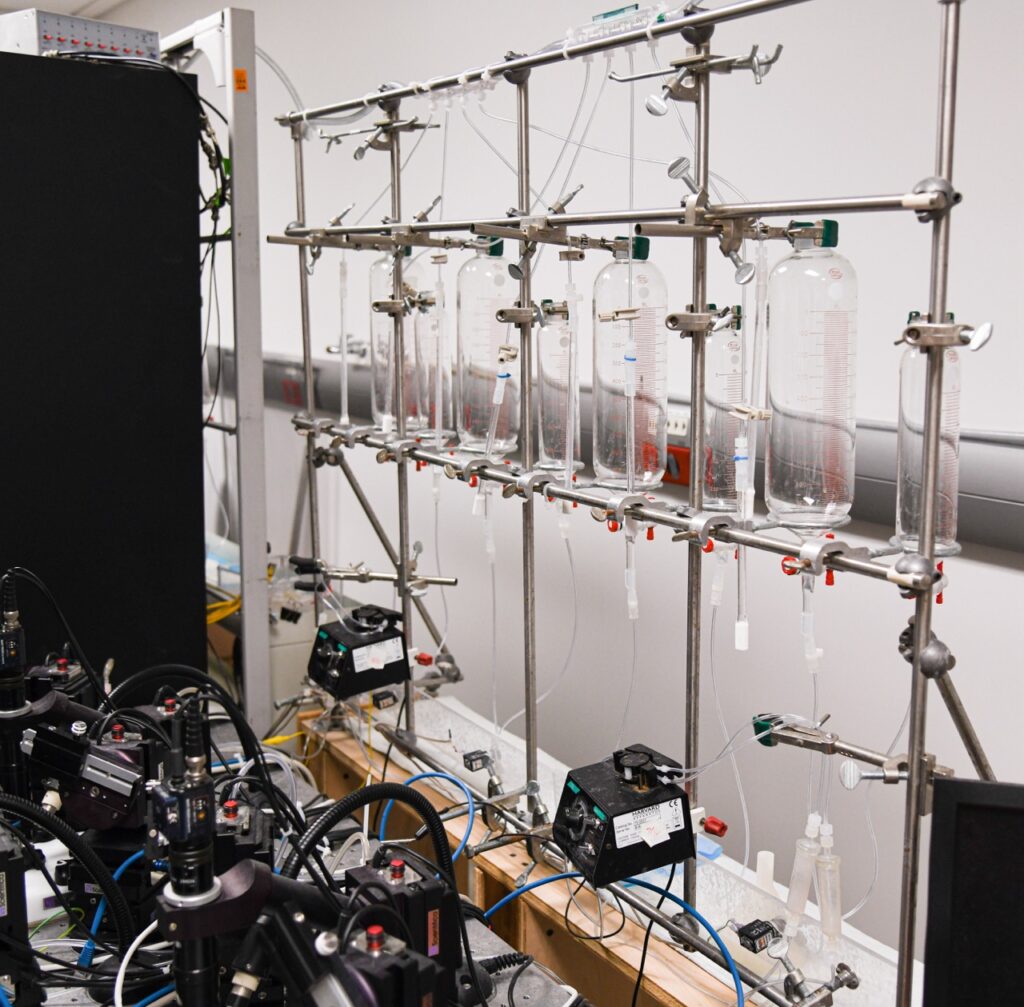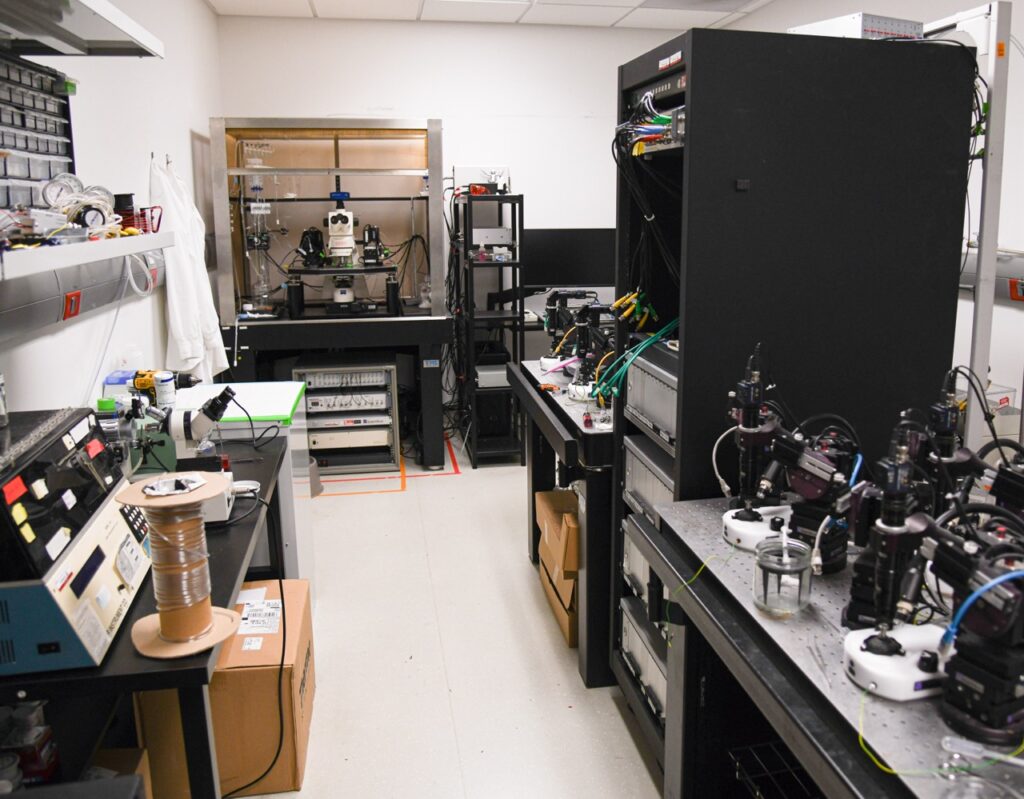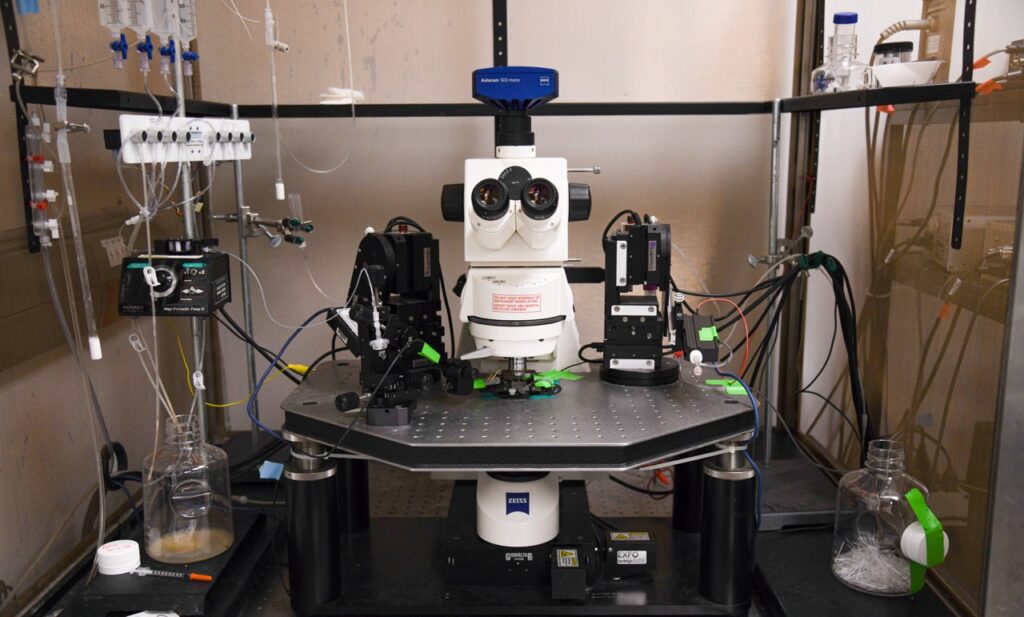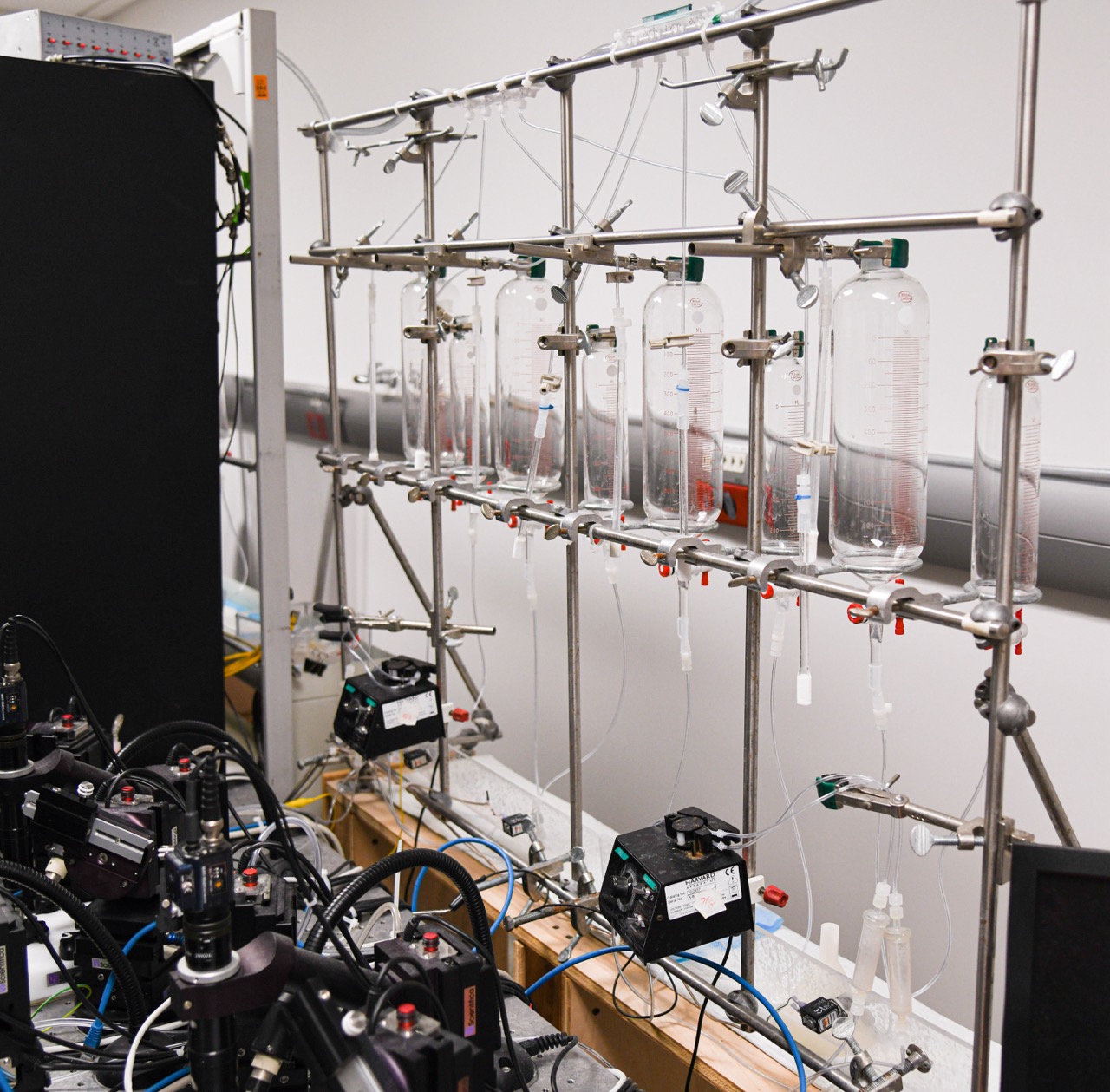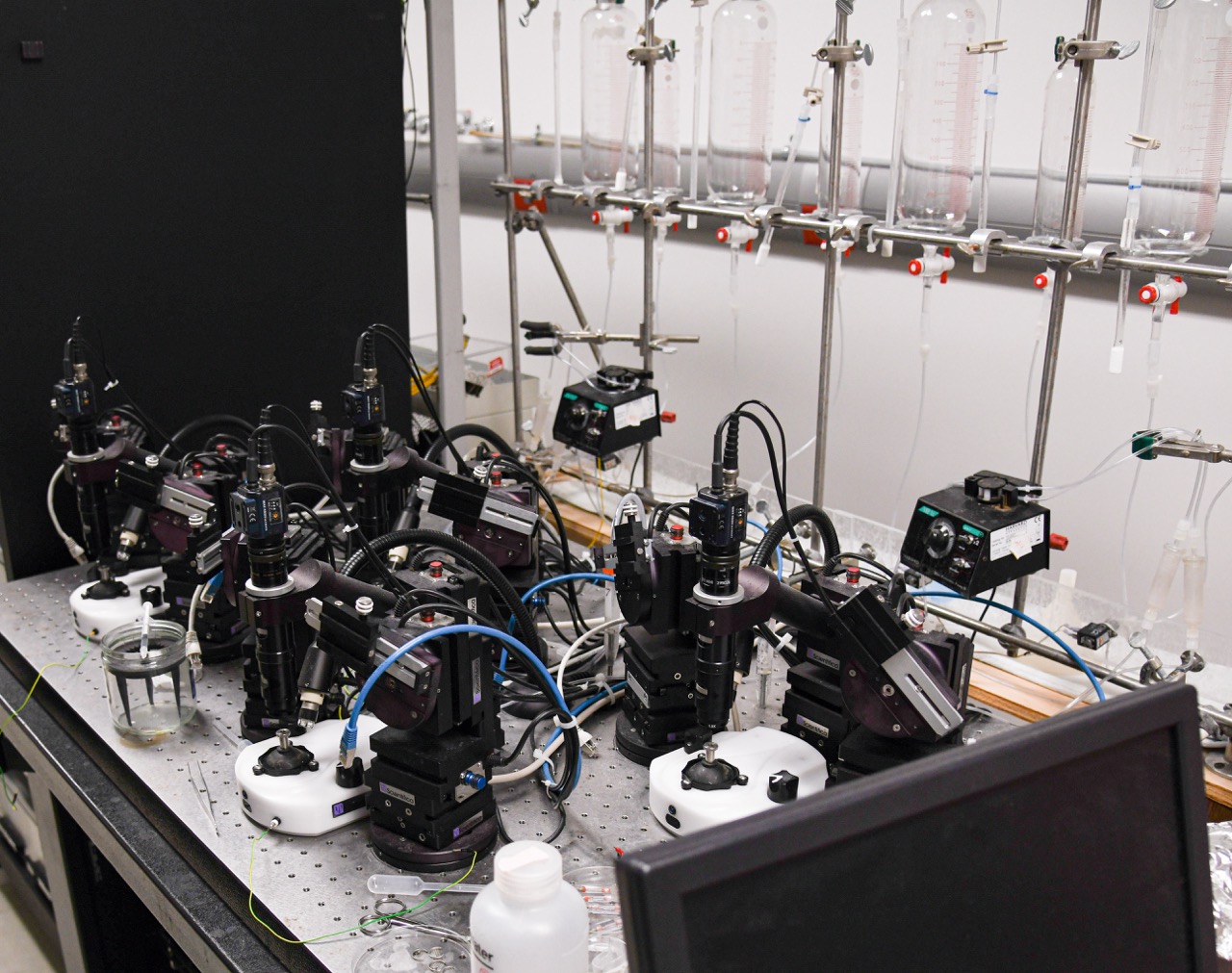
Anticonvulsant Drug Development Program
Overview
The Anticonvulsant Drug Development (ADD) Program is an established laboratory experienced in the preclinical identification and evaluation of investigational compounds for the treatment of epilepsy. Current investigators at the program have held multiple contracts with biopharmaceutical and government partners for testing novel compounds in seizure models. The program has considerable experience in performing efficacy and tolerability assessments of novel and established antiseizure drugs (ASDs) using multiple routes of administration (intraperitoneal (i.p.), intravenous (i.v.), oral (per os, p.o.), subcutaneous (s.c.), intramuscular (i.m.), intracerebroventricular (i.c.v.), and drug-in-food) in models for epilepsy. To learn more about the ADD program visit us here.
Services
The models we offer include maximal electroshock (MES)-induced seizure, 6 Hz seizure (varying stimulus intensities;), corneal kindled seizure test, in vitro slice electrophysiology studies (spontaneous bursting model), Theiler’s murine encephalomyelitis virus (TMEV) model of epilepsy, lamotrigine-resistant amygdala kindled model, intra amygdala kainate model of mesial temporal lobe epilepsy, and the post kainate-induced status epilepticus (SE) chronically epileptic model. In parallel, our staff routinely evaluates the effect of investigational compounds on motor impairment in the rotarod test, the open field locomotor assay, the minimal motor impairment (MMI) assay, and the modified Functional Observation Battery (FOB, or Irwin test). Our facilities include state of the art multi-channel monitoring units to allow for continuous video-electroencephalographic (v-EEG) monitoring for spontaneous seizures.
We also offer chronic administration of any compounds using a drug-in-food model. Using our automated feeder system, drugs can be delivered on a fixed schedule, 24/7 for any requested length of time. Food pellets containing compound are formulated either by outsourcing or can be custom made in-house. Prices will be determined based on the requirements of the planned study.
Requesting Services
Existing users may login directly to the Resource Scheduling System to schedule or order services. This system is cores-wide and uses University of Utah uNID authentication.
For any inquires please contact Vanja Panic with a description of your project and the type of services needed.
Hours of Operation
9:00 am to 5:00 pm
Monday - Friday
Major Publications
- Metcalf CS, West PJ, Thomson KE, Edwards SF, Smith MD, White HS, Wilcox KS. Development and pharmacologic characterization of the rat 6 Hz model of partial seizures. Epilepsia. 2017 Jun;58(6):1073-1084. doi: 10.1111/epi.13764. Epub 2017 Apr 27. PMID: 28449218; PMCID: PMC5469205.
- Metcalf CS, Vanegas F, Underwood T, Johnson K, West PJ, Smith MD, Wilcox KS. Screening of prototype antiseizure and anti-inflammatory compounds in the Theiler's murine encephalomyelitis virus model of epilepsy. Epilepsia Open. 2022 Mar;7(1):46-58. doi: 10.1002/epi4.12550. Epub 2021 Nov 3. PMID: 34668659; PMCID: PMC8886069.
- West PJ, Thomson K, Billingsley P, Pruess T, Rueda C, Saunders GW, Smith MD, Metcalf CS, Wilcox KS. Spontaneous recurrent seizures in an intra-amygdala kainate microinjection model of temporal lobe epilepsy are differentially sensitive to antiseizure drugs. Exp Neurol. 2022 Mar;349:113954. doi: 10.1016/j.expneurol.2021.113954. Epub 2021 Dec 17. PMID: 34922908; PMCID: PMC8815304.
- Thomson KE, Metcalf CS, Newell TG, Huff J, Edwards SF, West PJ, Wilcox KS. Evaluation of subchronic administration of antiseizure drugs in spontaneously seizing rats. Epilepsia. 2020 Jun;61(6):1301-1311. doi: 10.1111/epi.16531. Epub 2020 May 18. PMID: 32420627; PMCID: PMC7383749.
- Metcalf CS, Huff J, Thomson KE, Johnson K, Edwards SF, Wilcox KS. Evaluation of antiseizure drug efficacy and tolerability in the rat lamotrigine-resistant amygdala kindling model. Epilepsia Open. 2019 Aug 12;4(3):452-463. doi: 10.1002/epi4.12354. PMID: 31440726; PMCID: PMC6698678.
- West PJ, Saunders GW, Remigio GJ, Wilcox KS, White HS. Antiseizure drugs differentially modulate θ-burst induced long-term potentiation in C57BL/6 mice. Epilepsia. 2014 Feb;55(2):214-23. doi: 10.1111/epi.12524. Epub 2014 Jan 21. PMID: 24447124; PMCID: PMC3945279.
Recent Mentions
- Wojtalewicz S, Erickson S, Vizmeg J, Shuckra J, Barger K, Cleveland A, Davis J, Niederauer S, Beeman M, Panic V, Wilcox K, Metcalf C, Agarwal J, Lade C, Davis B. Assessment of glyceride-structured oleogels as an injectable extended-release delivery system of bupivacaine. Int J Pharm. 2023 Apr 25;637:122887. doi: 10.1016/j.ijpharm.2023.122887. Epub 2023 Mar 27. PMID: 36990171.
Citing Our Facility
Acknowledgments
We would like to thank you for acknowledging the our facility. This recognition allows us to highlight the impact of your work and demonstrates the important contributions of our facility makes to research across the University of Utah. The recognition our core receives from your acknowledgments also aids in receiving grants and further funding for equipment and services we can provide to our users.
Self-Run Services / Instrumentation Usage:
In published papers that used instruments at our facility and notably involved staff members please use the following format:
We acknowledge (facility name) at the University of Utah for use of equipment (insert instrument/service details here), and thank (insert any notable staff member – if desired) for their assistance.
Assisted Services:
In published papers where a staff member assisted you in addition to the requested services please use the following format:
We acknowledge (facility name) at the University of Utah for use of equipment (insert instrument/service details here), and thank (insert staff member-required) for their assistance in (service provided).
Collaboration:
For publications resulting from collaborations that assisted with the methodologies, planning process and execution of your experiment in addition to equipment usage we require Co-author attribution on your publication for our facility and any staff members who provided substantial contributions to the originating project.
